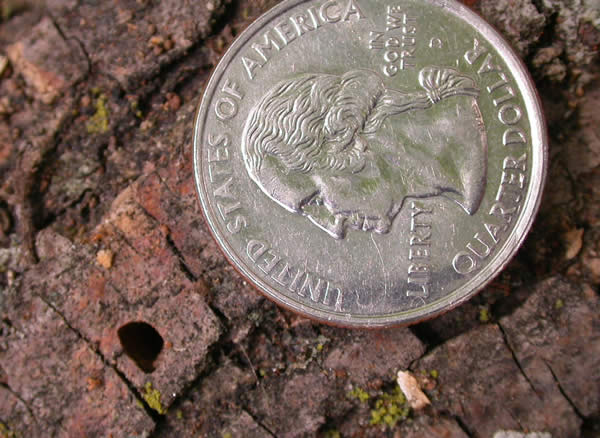Emerald Ash Borer in Arlington
A Threat to Our Trees
Our urban forest is under threat of the Emerald Ash Borer, an invasive insect with the capacity to kill ash trees in a very short time. Our native ash trees have no defense against this borer, and landowners should be prepared to see increased pressure to manage their trees.
The first discovery of the borer in Virginia occurred in Fairfax County in 2003. An eradication project was undertaken and subsequent surveys suggested it had been successful. However in July 2008, Emerald Ash Borer was again discovered in Arlington and Fairfax. The Emerald Ash Borer is assumed to be county-wide at this point, and we continue to find infected trees in our parks and other properties.

Dead ash tree Doctor’s Run Park
Do You Have Ash Trees on Your Property?
Learn how to identify Ash Trees and species that may look like ash trees.
What Does the Borer Look Like?
Adult beetles are about one-half to three-quarters inches long and have a bright green metallic coloration. The larvae are up to 2 inches long and have a pincher-like appendage at the end. The larvae also have lobes on the side of the body.
More identification info:http://www.emeraldashborer.info

Borer entry hole
To Treat or Not to Treat
Adult beetles emerge in late May, June and July, and females feed on the leaves 22 days before laying eggs on the bark in crevices. Eggs hatch in about a week and the immature stage immediately bores into the bark and begins feeding in the cambium area just under the bark. The larvae make long S-shaped tunnels. They feed until fall and then spend the winter under the bark. They pupate in the spring and the adults emerge from D-shaped exit holes.
Arlington County treats its most valuable trees. If you have an ash tree on your property, follow this decision guide to find out what the best treatment is:
http://extension.entm.purdue.edu/EAB/pdf/NABB_DecisionGuide.pdf
Don’t Move Firewood!
One major pathway for emerald ash borer to spread is through moving firewood across county and state lines.
- Don’t move firewood from outside of your community.
- Ask your firewood supplier for the source of firewood.
- Don’t accept firewood without knowing its origin.
Additional Information: